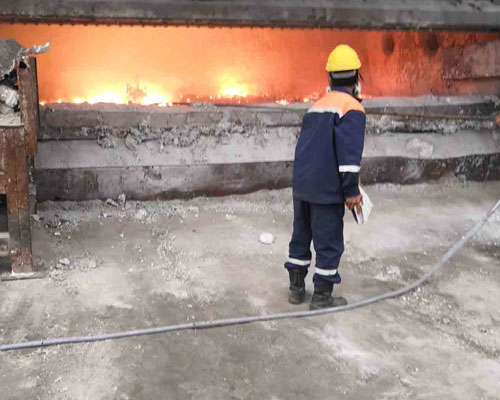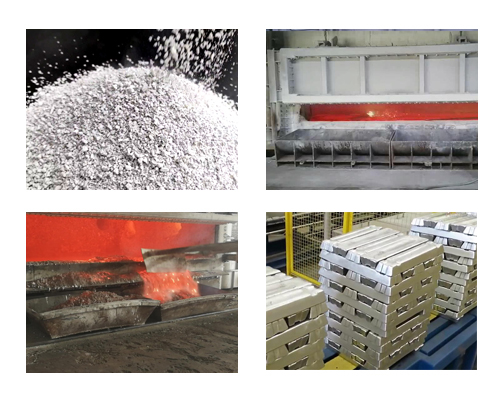Aluminum Casting Flux Purification is the key to improving the quality of aluminum alloy metallurgy, and it is also the basis for refinement and deterioration. Casting A356 aluminum alloy has been widely used in products such as automobiles and motorcycles due to its excellent casting properties, heat treatment properties, processing properties and mechanical properties, and has become one of the most important AI-Si series cast aluminum alloys. The main defects of cast aluminum alloy-pores and slag inclusions are caused by solid particles such as gas and oxides remaining in the alloy. Therefore, in order to obtain high-quality melt, it is not only necessary to select the correct and reasonable smelting process, but also the refining and purification treatment of the melt is also very important.
In the metallographic structure of A356 aluminum alloy without melt purification treatment, large blocky inclusions appear, needle-like eutectic silicon phase appears in the microstructure, and rod-like dendrites are coarse. In the metallographic structure after the granular flux treatment, the inclusions are significantly reduced, the inclusions are fine and dispersed, and the fine dendrites are evenly distributed. The granular flux treatment has a high impurity removal rate and a good hydrogen removal effect. The hydrogen content in the molten aluminum after the granular flux purification treatment becomes less. It can be seen that the granular flux treatment of A356 aluminum alloy has a good degassing and impurity removal effect, which also indicates that the inclusions in the molten aluminum play an important role in the formation of pores.

The Influence of Melting Temperature on Aluminum Casting Flux Purification
The standing time of flux refining treatment is 10min. As the purification treatment temperature increases, the hydrogen content in the molten aluminum also increases. After the flux-treated aluminum melt is overheated at 850°C, the furnace is cooled to 720°C, and the purification effect is different after purification treatment at 720°C. Compared with the purification treatment by heating directly to 720℃, the impurity content and hydrogen content of A356 aluminum alloy after overheating and then furnace cooling to 720℃ for purification treatment have changed significantly, and the impurity content has increased, and the hydrogen content The increase in the amount of flux will reduce the purification effect of the flux, which ultimately affects the mechanical properties, and its strength is greatly reduced.
After overheating, the temperature is lowered for aluminum casting flux purification treatment, and many large-sized inclusions can be seen on the metallographic structure of the alloy. The existence of the inclusions will reduce the mechanical properties of the alloy. It can be seen that the control of smelting temperature plays an extremely important role in the purification process of A356 aluminum melt.
The temperature is too low to affect the performance of the flux; the temperature is too high, the aluminum liquid is easy to oxidize and inhale, which reduces the purification effect of the flux. Therefore, the temperature of flux purification treatment should generally be controlled at 720-740°C. In addition, with the increase of the purification treatment temperature, the change in the hydrogen content of the molten aluminum after purification by the flux removal treatment is relatively stable and remains at a relatively low level.

